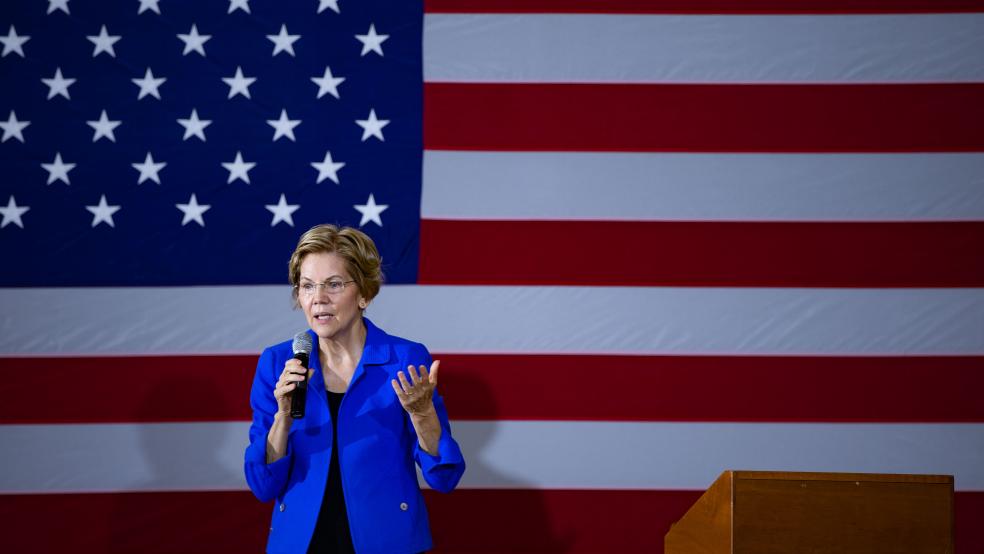The Committee for a Responsible Federal Budget is the latest group to take a stab at answering the big question looming over the Medicare-for-All debate — and Elizabeth Warren’s presidential campaign: How to finance a transition that would shift essentially all private health-care costs to the federal government.
The budget watchdog group says it will issue a detailed analysis of how to finance Medicare for All in the coming months, but its preliminary estimates include these choices that highlight just how dramatic the shift would be. (Hint: if you’re looking for realistic options, focus on the bottom one).
- A 32 percent payroll tax
- A 25 percent income surtax
- A 42 percent value-added tax (VAT)
- A mandatory public premium averaging $7,500 per capita – the equivalent of $12,000 per individual not otherwise on public insurance
- More than doubling all individual and corporate income tax rates
- An 80 percent reduction in non-health federal spending
- A 108 percent of Gross Domestic Product (GDP) increase in the national debt
- Impossibly high taxes on high earners, corporations, and the financial sector
- A combination of approaches.
Howard Gleckman of the Tax Policy Center provides a useful reminder that much of the tax increase needed to finance the roughly $32 trillion increase in federal costs “would be offset by a decline in personal health care spending. And some of the reduction in health spending by employers would result in higher wages or larger business profits that would be subject to tax. Still, most of the $32 trillion will have to come from unpopular tax hikes.”
And Larry Levitt, executive vice president for health policy at the Kaiser Family Foundation, says that the “eye-popping numbers” in the list above highlight two points:
“1. The tax increase would be a political lightning rod.
2. We are spending a whole lot on health care today, since these tax increases would largely replace premiums and deductibles.”
Levitt expands on that second point by noting, “We spend almost 18% of GDP on health care. So, a Medicare-for-all system would have to tax roughly one-fifth of income on average. If our health costs were like the rest of the world, the tax would be a lot lower.”
Read the preliminary analysis by CRFB here. Read more about the Medicare for All cost debate at The Wall Street Journal, Forbes, The Washington Post or The Week.






